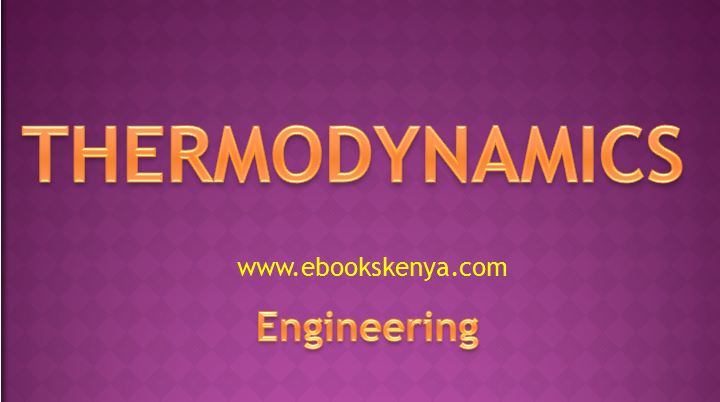
Introduction
Thermodynamics deals with the relationships of work, heat and energy. Finally, fluid mechanics deals with fluids in motion and hydraulic machines e.g. pumps. This section is covered and tested as a paper in the final stage.
The instructional approach will emphasize on experiments, industrial visits and analysis of various engineering concepts.
TOPICS COVERED:
Introduction to Fundamentals of Thermo-Dynamics
- Definitions of terms:
- Thermodynamic systems
- Types of working fluids
- Types of thermodynamic processes
- Thermodynamic cycles
- Definition of work
- Statement of the first law of thermodynamics
Steady Flow Processes
- Derivation of steady flow energy equation (S. F. E. E)

- Application of the S. F. E. E.
- Calculation of work, heat transfer, changes in internal energy, and enthalpy
Non-Flow Processes
- Non-flow energy equation (N.F. E. E.)

- Apply the N. F. E. E. for a gas and vapour processes
Perfect Gases
- Boyle’s law
- Charles’ law
- Derive the characteristic gas equation
- Solution of problems using characteristic gas equation the equation
- Definition of specific heats, universal gas constant, and specific gas constant
- Boyle’s law experiment
- Charles’ law experiment
- Joule’s law experiment
Steam
- Steam generation
- PV diagram
- TS diagram
- Identification of different regions on the PV diagram
- Definition of different conditions of steam
- Area under the – P-V diagram
- Determination of dryness fraction
- Experiments on pressure and boiling point
- Experiment on energy balance
Thermodynamic Reversibility and Entropy
- Criteria for reversibility
- Internal reversibility
- Explanation of the principle of the heat engine.
- Second law of thermodynamics
- Thermal efficiency
- Carnot cycle
- Net work
- Net heat
- Area under the T-S diagram
Ideal Gas Cycle
- Explanations of the different gas cycles
- Air standard efficiency
- Work done
- Heat received or rejected
- Compression ratio
- Mean effective pressure
- Maximum cycle temperatures
Fuels and Combustion
- Classifications of fuels
- Properties of fuels
- Definition of combustions terminologies
- Application of the equations to solve combustion and exhaust gas problems
- Determination of calorific value of fuel.
- Analysis of products of combustion
Heat Transfer
- Application of the conduction equations
- Derivation of the heat transfer equations
- Application of the heat transfer equations to solve related problems
Heat Exchangers
- Classification
- Description of various types of recuperative heat exchangers
- Derivation of heat exchanger equations
- Application of the equations
- Heat exchanger experiments
Air Compressors
- Classification
- Types of compressors
- Derivations of equations of reciprocating compressors
- Applications of the equations of reciprocating compressors
- Air compressor experiments
Gas Turbines
- Theoretical cycle
- Open gas turbine unit
- Closed gas turbine unit
- Plant diagram
- T-S diagram
- Thermal efficiency
- Derivation of gas turbine equations
- Modifications of the basic cycle
- Applications of the gas turbine equations
Impulse Steam Turbines
- Principle of operation.
- Compounding
- Multi stage impulse turbine
- Derivation of related equations
- Optimum operating conditions
- Steam turbine experiments
- Mechanical efficiency
- Specific fuel consumption
- Specific steam consumption
(Visited 2,593 times, 1 visits today)

I would like to have thermodynamics notes and past papers knec
notes pls
Educativ
Kindly help me get notes and knec questions for dip 3 automotive,how do i get them please
How can one get the notes for Automotive Engineering Module III units and how much are they?